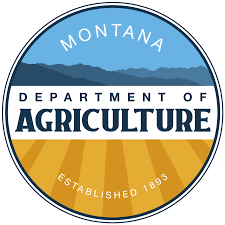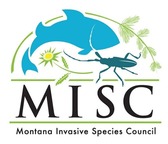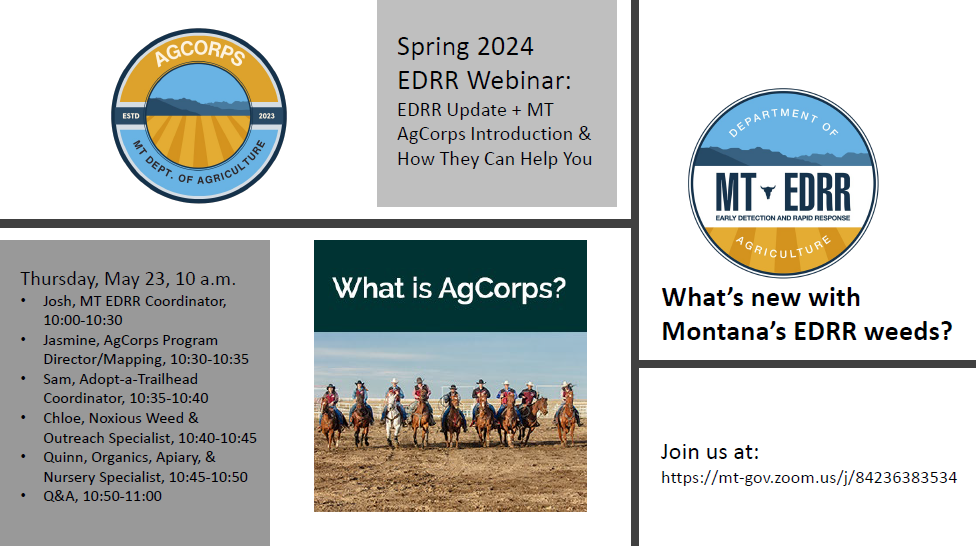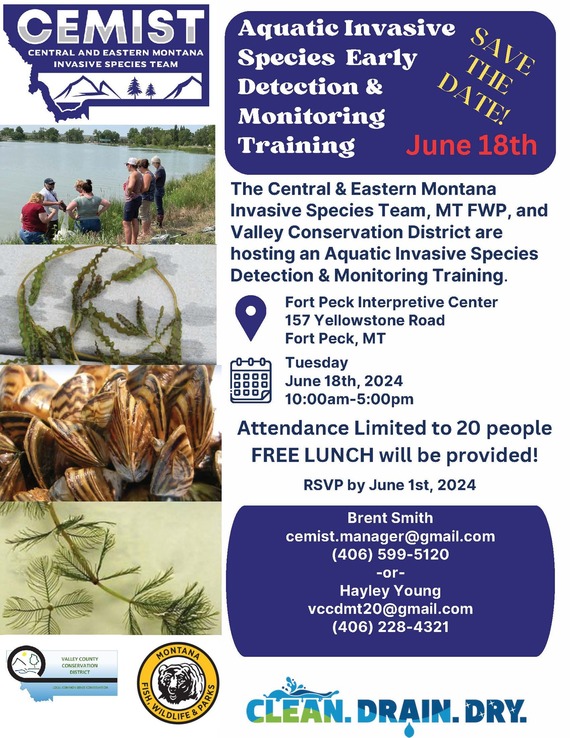NAISMA Conference Comes to Montana September 30 - October 3
Montana's Jane Mangold is keynote speaker
 The 32nd NAISMA Annual Conference 2024 will be co-hosted with the Montana Invasive Species Council. Over 300 attendees from a broad range of backgrounds, invasive species, and natural resource professions are expected to attend from across North America and beyond. This year’s theme will highlight the foundations needed to implement management strategies that work, partnerships that impact diverse geographies, and policy and funding successes that can be tailored to fit your landscape. The conference includes all-taxa of invasive species. Here are some highlights:
- Special track of sessions on Invasive Annual Grasses.
- Field trips to 4 sites highlighting invasive species challenges and successes.
- Partnership with the Continental Dialogue on Non-native Forest Insects and Diseases
- First ever showcase if invasive mascots!
A Montana Noxious Weed Trust Fund Grant will support attendance by Montana's county weed districts, conservation districts, and extension staff. Stay tuned for details.
Call for Presenters and Posters
The NAISMA conference is broad in geographic scope, covering challenges and successes that impact and can influence all of North America including aquatic and terrestrial plants, animals, insects, pests, and pathogens.
Applications for presenters and posters are being accepted now. See the details here.
 |
|
Montana Department of Agriculture Position Opening!
MT Department of Agriculture is hiring an Invasive Species Education Coordinator.
This position will serve the roll of the Noxious Weed Education Campaign Coordinator and include other taxa.
|
 |
|
Montana Invasive Species Council Position Opening!
MISC is hiring a Program Coordinator.
This position will support MISC's all taxa invasive species planning, prevention and education projects.
|
APHIS Launches Updated Website
The U.S. Department of Agriculture Animal and Plant Health Inspection Service (APHIS) is announcing the launch of its newly updated website, redesigned to keep pace with evolving technology and better meet our stakeholders’ needs.
“Thousands of APHIS customers and stakeholders use our website daily to conduct business for trade, permits, licensing, and more,” said Dr. Mike Watson, APHIS Administrator. “Our goal is to ensure they can more easily access the information they need and that it is accessible to everyone who may be visiting the website.”
This new site was built with customers in mind and will help all visitors to the APHIS website, whether they are traveling with pets, importing products, applying for a license, or any other type of business.
Here are a few of MISC's favorite pages:
News
Program enables anglers to turn in pike for pay while fishing Lake Roosevelt, Rufus Woods Lake
(Columbia Basin News-Washington) In an effort to control the population of northern pike in Lake Roosevelt and Rufus Woods Lake, the Colville Tribes Fish and Wildlife (CTFW) is inviting anglers to participate in the Northern Pike Reward Program. This unique initiative not only aids in the conservation of the lake's ecosystem but also offers a financial incentive to those who contribute to the pike's management.
Holly McLellan, a fish biologist for CTFW, emphasized the importance of this program, stating, "We want to remind anglers to kill all northern pike captured and to turn in their heads for a reward. It doesn’t matter what size they are; even the small pike count towards the reward.” In the previous year, participants in the program turned in 125 pike heads, receiving a total of $1,250 in rewards. Despite these efforts, there remains a significant need for ongoing assistance from anglers to diminish the pike population in the lake.
Northern pike, which can grow over 50 inches long and weigh up to 45 pounds, pose a substantial threat to the local aquatic environment. Their capacity to produce up to 250,000 eggs and their predatory nature, capable of consuming a variety of species including frogs, birds, and fish such as trout, salmon, and steelhead, make them a significant concern for the lake's biodiversity.
Mussel-Fouled Boat Intercepted at Anaconda Inspection Station
(FWP) Montana’s first mussel-fouled watercraft of the year was intercepted at the Anaconda watercraft inspection station on March 10.
The pontoon boat was recently purchased used in North Dakota and was travelling along Interstate 90 west toward Ephrata, Wash. Mussels were found along the hull throughout the lifting strakes as well as the transom and gimbal areas. Inspectors performed a full decontamination on site, and the boat was locked to the trailer. Previous launch information was unknown, but the new owner believed it had not been in the water since last summer.
All watercraft (motorized and non-motorized) coming into Montana from out of state must be inspected. Watercraft must be drained of all water before transporting.
Watercraft inspection stations are Montana’s first line of defense to prevent the movement of aquatic invasive species (AIS) which can have devastating impacts on Montana waterways. Boaters must stop at all watercraft inspections stations they encounter.
Learn more at fwp.mt.gov/conservation/aquatic-invasive-species or call the FWP Aquatic Invasive Species Bureau at 406-444-2440.
Warden Intercepts Mussel-Fouled Boat After Driver Neglects to Stop at Inspection Station
(FWP) – A Montana Fish, Wildlife & Parks warden stopped a driver pulling a ski boat after he drove past an aquatic invasive species (AIS) inspection station near Anaconda last week. The warden noticed some mussels on the boat and had the driver return to the inspection station where many more mussels were detected. A full decontamination was performed at the station and the boat was locked to the trailer.
This is a good reminder that it’s the law that anyone transporting watercraft (motorized and non-motorized) must stop at all open inspection stations they encounter. Watercraft includes paddle boards, kayaks, canoes, rafts and pack rafts. Nonresidents and residents returning home must have their watercraft inspected before launching in Montana. Watercraft must also be drained of all water before transporting.
“Although it might be tempting to drive past an inspection station, boaters need to be aware that it’s up to them to prevent AIS from coming into our state,” said Tom Woolf, FWP’s AIS bureau chief. “An inspection typically takes less than 10 minutes.”
The driver was transporting the boat from Michigan to British Columbia.
More AIS News
Webinars
Horizon Scanning & Hotspot Analysis for Invasive Species Early Detection and Rapid Response
Monday - April 29 from 1-2:30 pm MT
This webinar explores horizon scanning (what to look for) and hotspot analysis (where to look) to inform early detection and rapid response (EDRR) for invasive species. Horizon scanning and hotspot analysis are among the first steps in implementing an EDRR framework. The Department of the Interior has invested in developing information and tools for resource managers to easily access and apply horizon scanning and hotspot analysis to their areas of responsibility.
The webinar will feature presenters from the US Geological Survey and the US Fish and Wildlife Service. They will share the latest information on global and regional horizon scans, watchlists, and hotspot analysis tools for both aquatic and terrestrial species. The webinar will also feature breakout sessions to further explore this topic and learn about participants’ perspectives, with a focus on how a new hotspot analysis tool in development for invasive animals can best meet needs.
This talk is hosted in partnership with the Association of Fish and Wildlife Agencies.
Early Detection Rapid Response Webinar
Montana Department of Agriculture will be hosting a Spring 2024 EDRR Webinar, via Zoom, on May 23, from 10 - 11 a.m.

Training


Montana State University Extension Workshop
The Level 3 Noxious Weed Management Certification Workshop is the final installment in a series of courses focused on weed biology, ecology, and management. This two-day course is designed to benefit experienced weed and land management professionals, and participants must first complete Levels 1 and 2 in the series.
When: September 4 - 5, 2024
More Information...
Save the Date
|